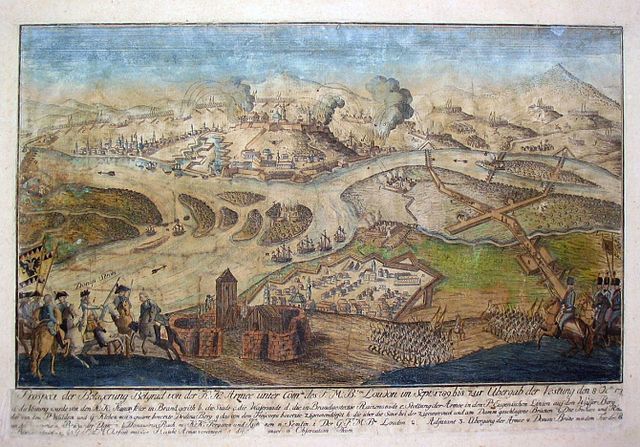Eugène-Guillaume Argenteau
Eugène-Guillaume-Alexis, comte de Mercy d'Argenteau or Eugen Gillis Wilhelm Graf Mercy d'Argenteau or Eugen Gillis Alexis Argenteau joined the Austrian army in 1760 and fought in the Seven Years' War. In 1784 he became the commander of an Austrian infantry regiment. He led the unit during the Austro-Turkish War at the 1789 Siege of Belgrade and was promoted to general officer. After the outbreak of the War of the First Coalition, he was loaned to the Kingdom of Sardinia-Piedmont. He fought at Saorgio in 1794 and Monte Settepani and Loano in 1795. His division faced Napoleon Bonaparte and was badly defeated in the Montenotte campaign in April 1796. During the War of the Third Coalition he led several divisions at Caldiero in 1805. He retired from the army in 1808 but became inhaber (proprietor) of an Austrian infantry regiment from 1809 until his death.
Eugène-Guillaume Argenteau
Bonaparte severed the link between the Austrian and Sardinian armies near Dego by smashing Argenteau's division.
In the siege of Belgrade a Habsburg Austrian army led by Feldmarschall Ernst Gideon von Laudon besieged an Ottoman Turkish force under Osman Pasha in the fortress of Belgrade. After a three-week leaguer, the Austrians forced the surrender of the fortress. During the campaign which was part of the Austro-Turkish War, the Austrian army was greatly hampered by illness. Austria held the city until 1791 when it handed Belgrade back to the Ottomans according to the terms of the peace treaty. Several Austrian soldiers who distinguished themselves during the siege later held important commands in the subsequent French Revolutionary Wars and Napoleonic Wars. Belgrade is the capital of modern Serbia.
Siege of Belgrade in 1789
Gideon von Laudon
Belgrade's ancient castle
Turkish Janissary musketeer






